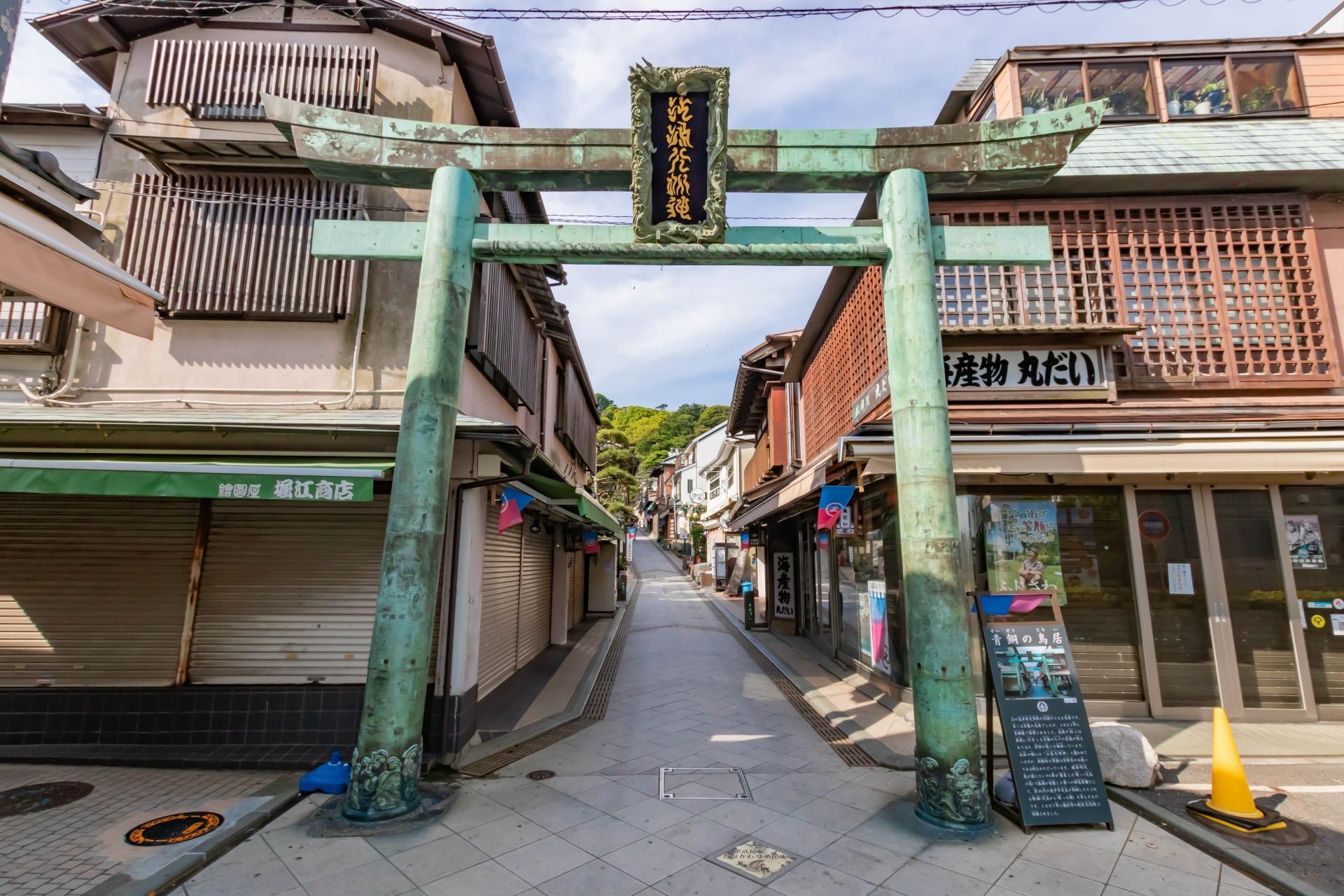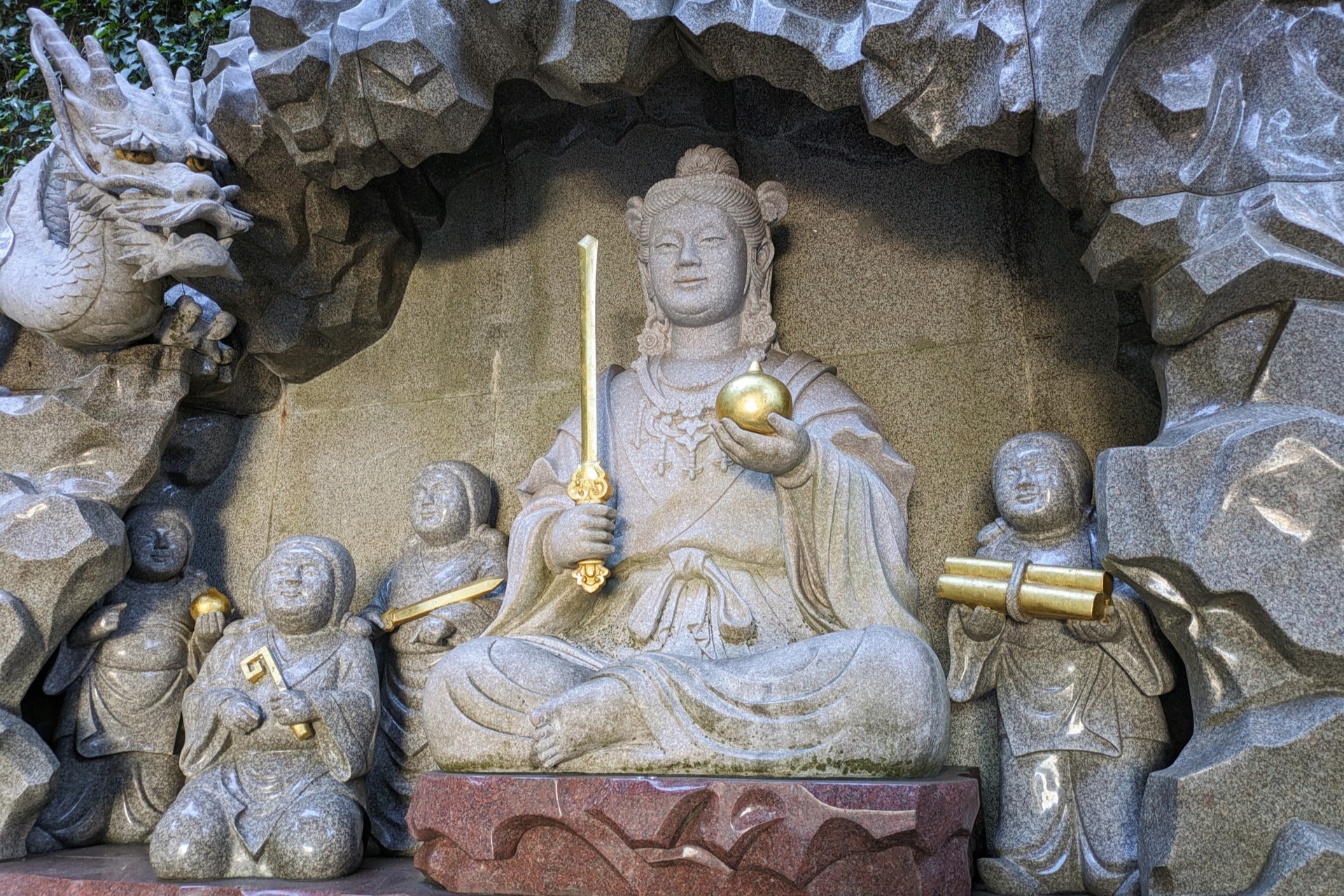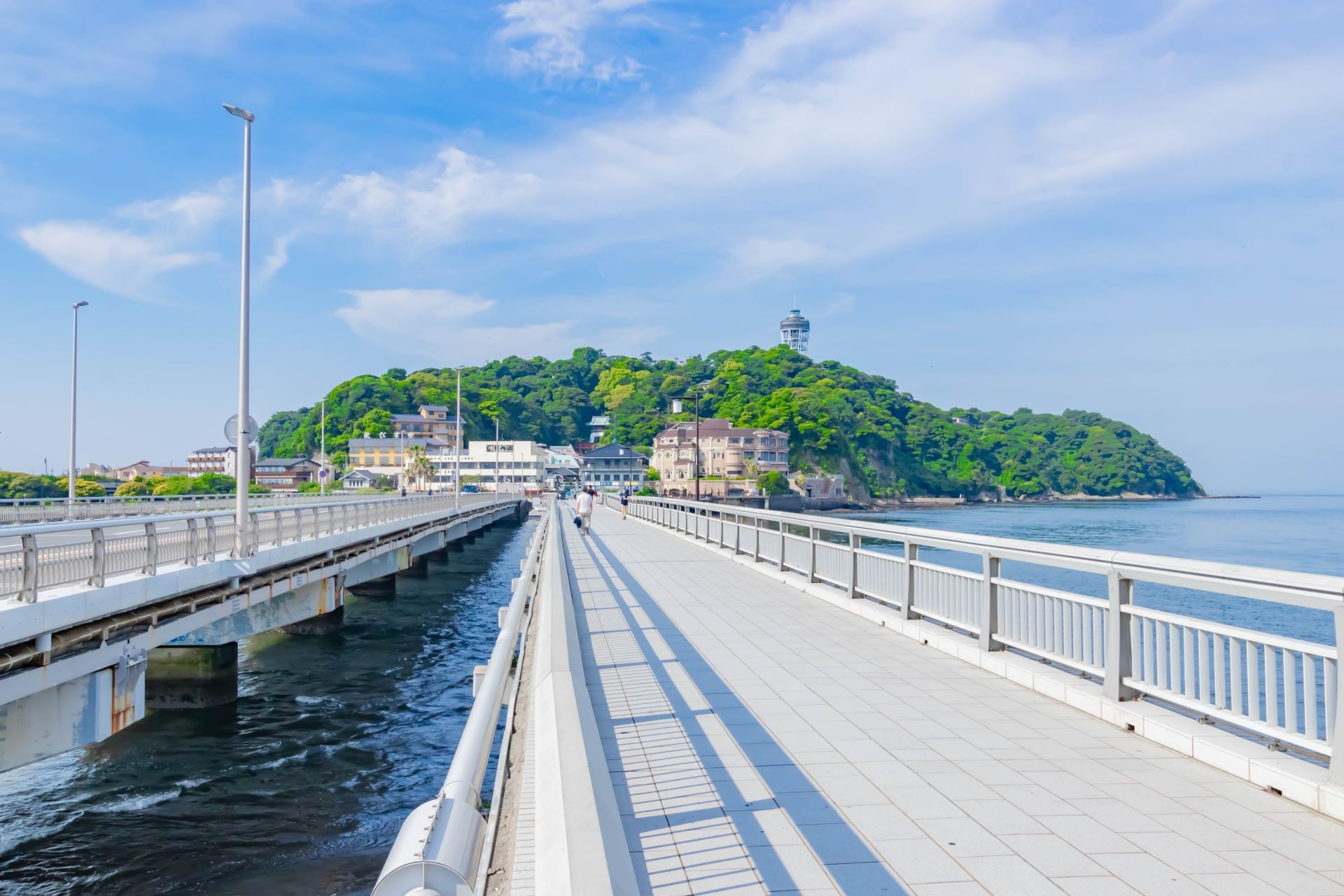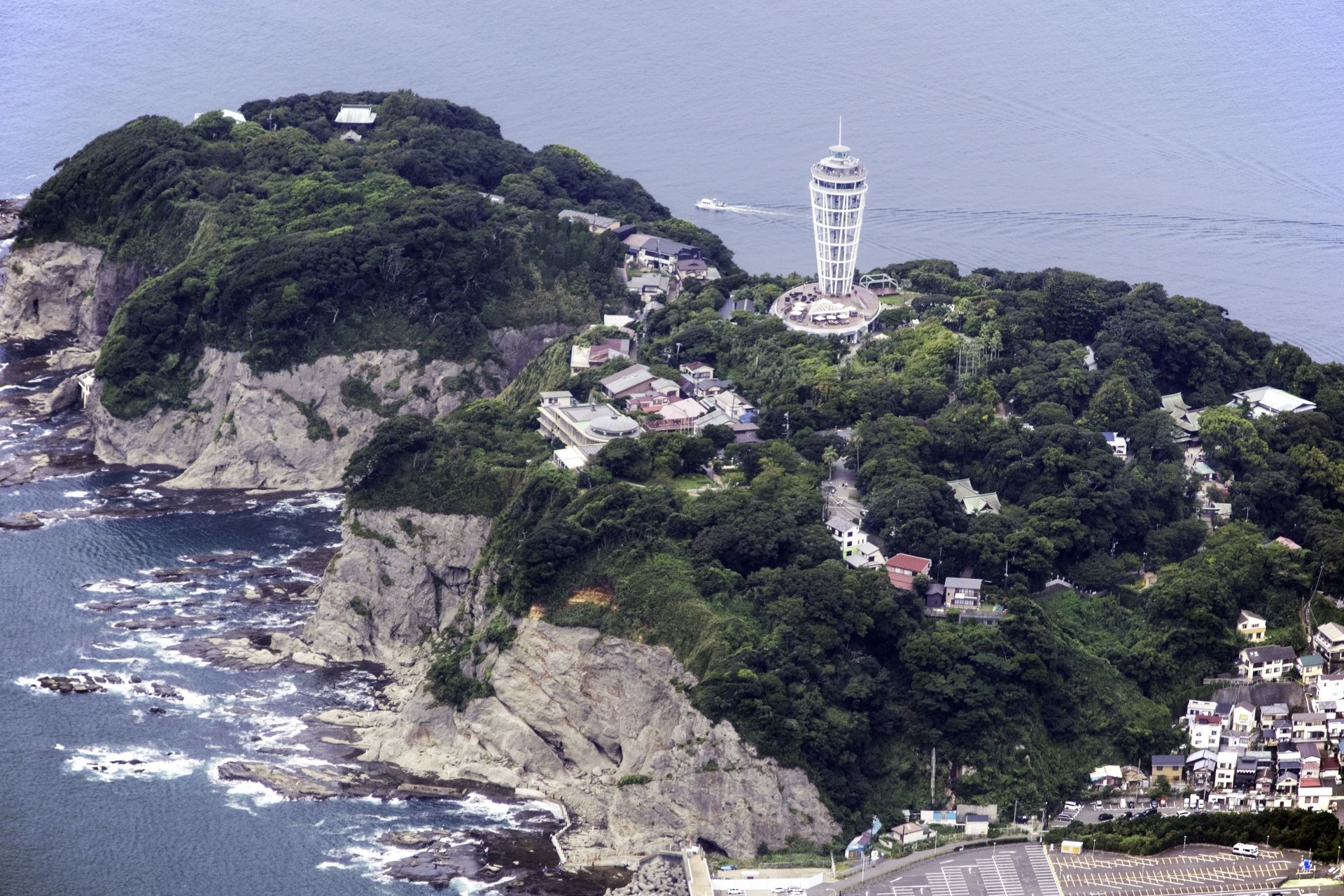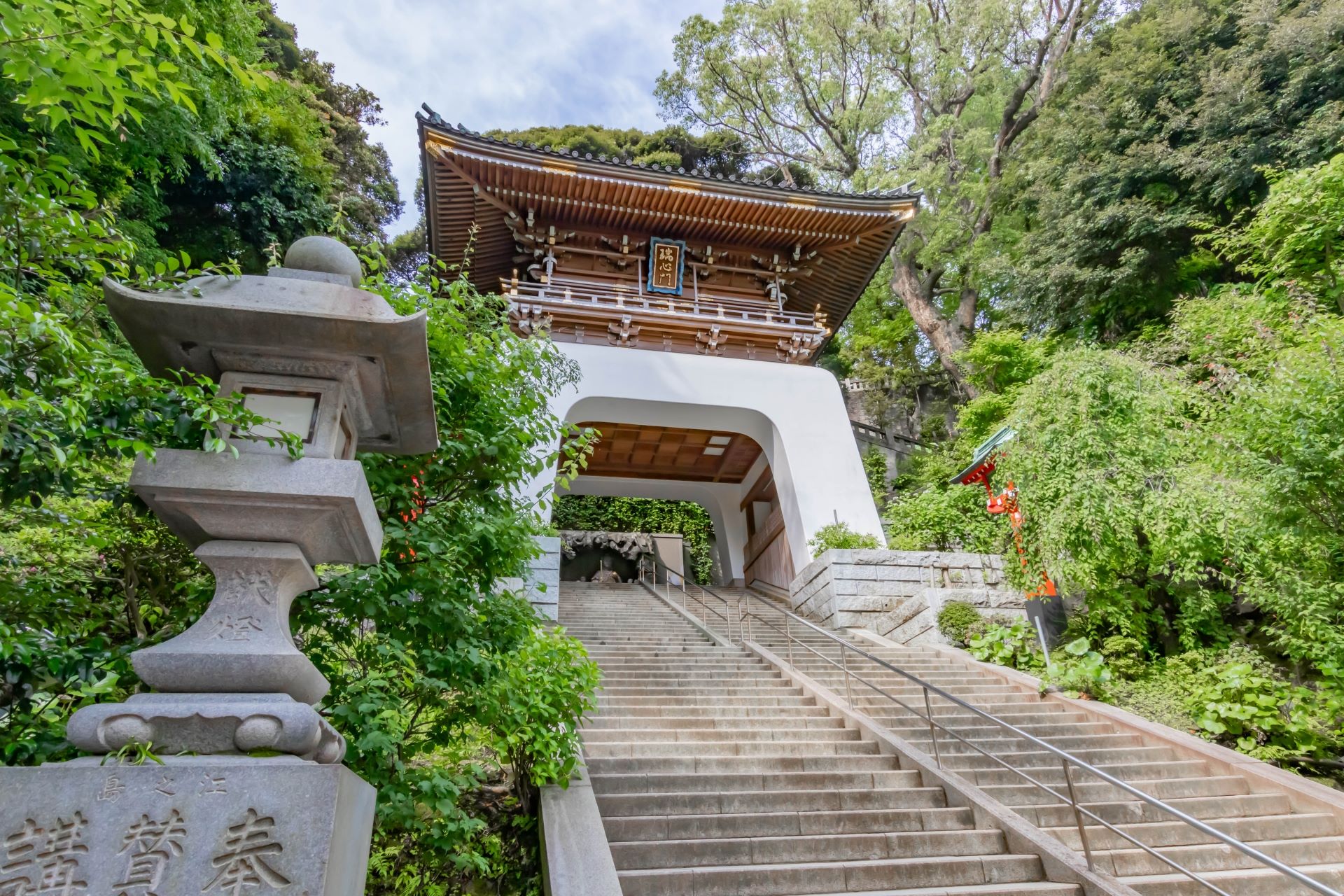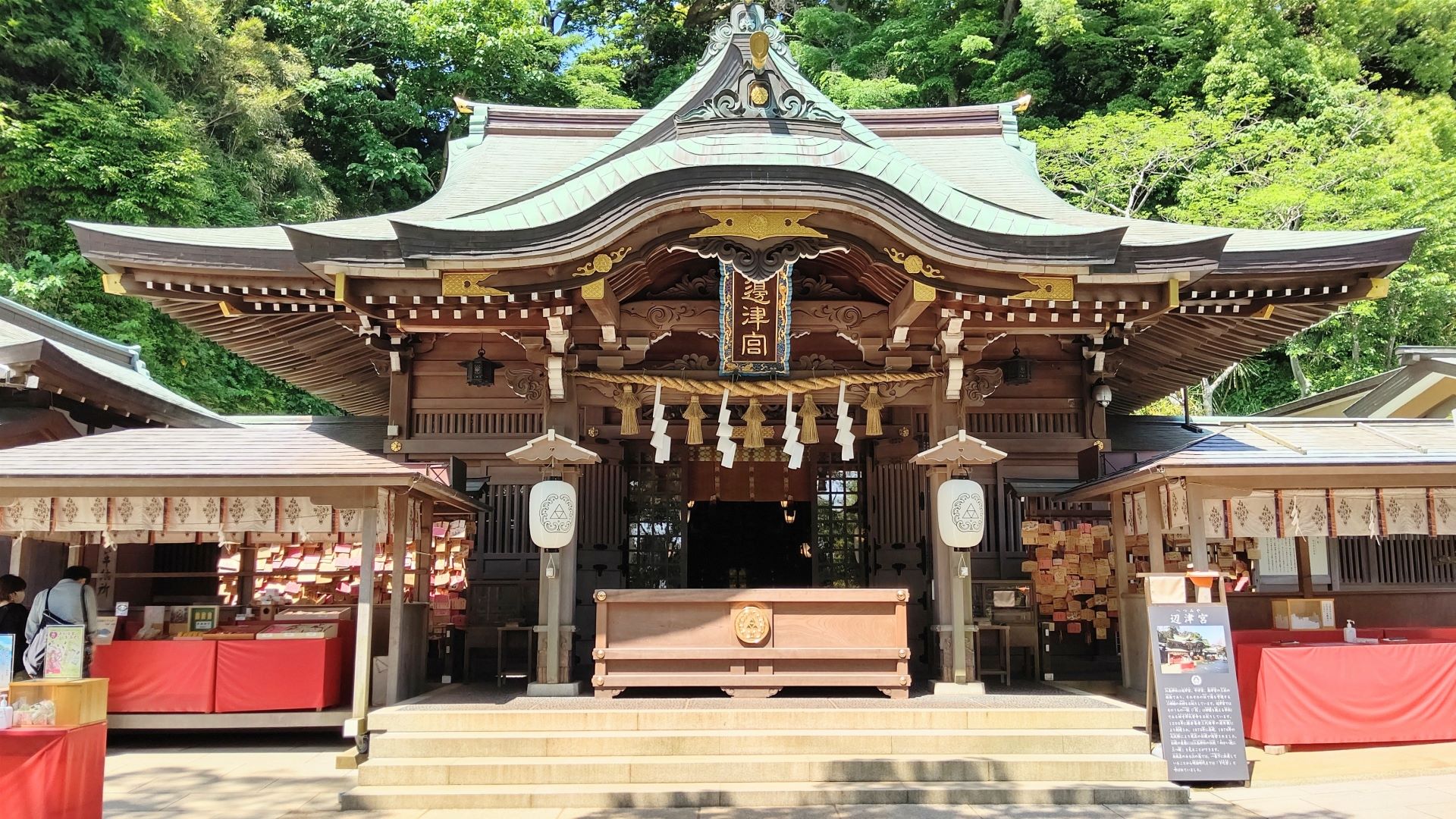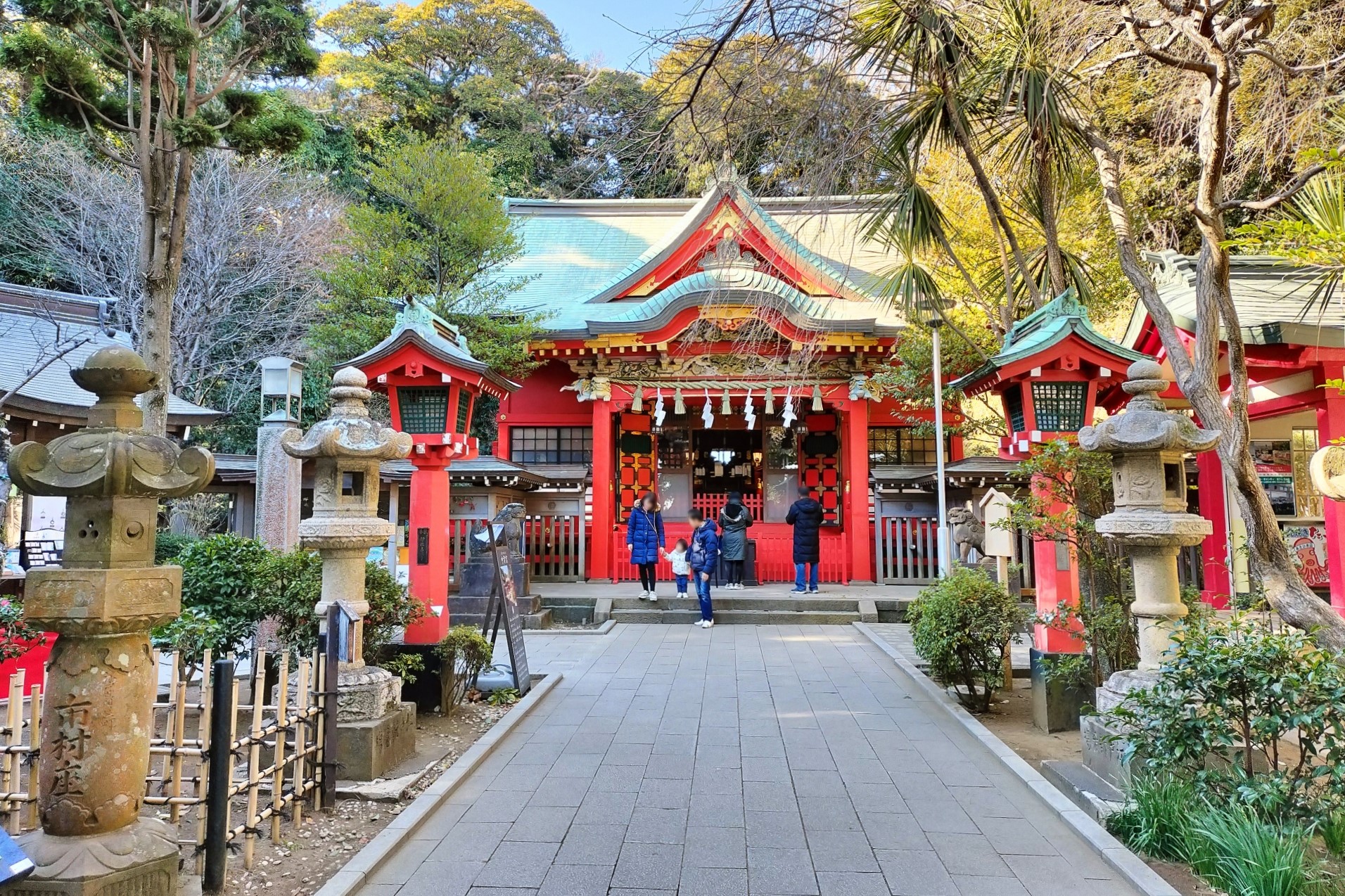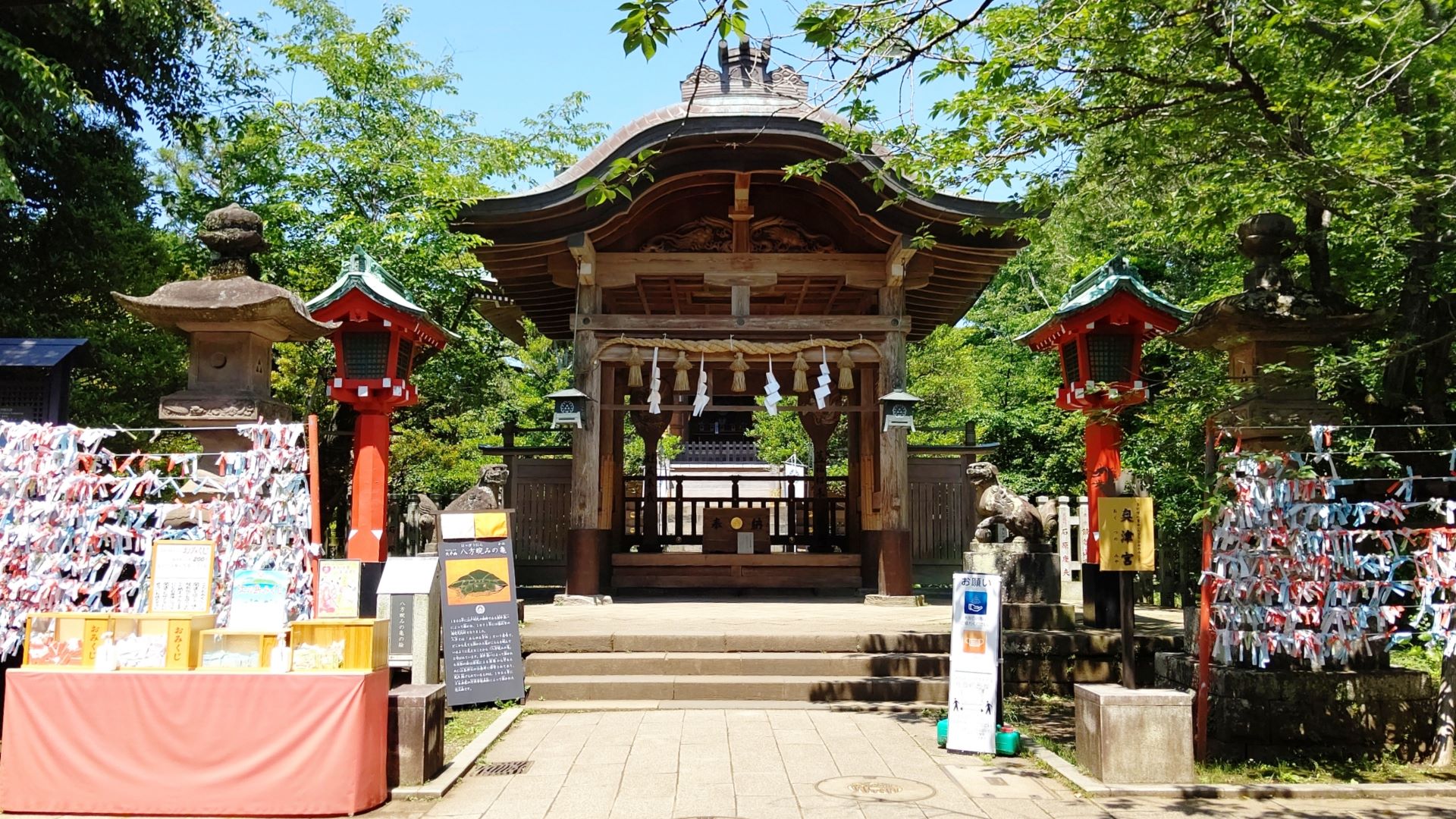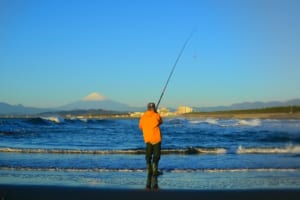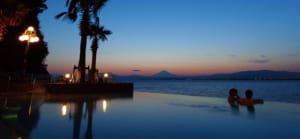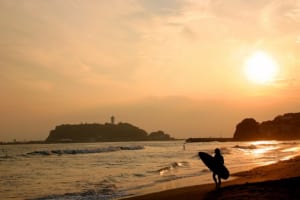Enoshima: Guide to a Seaside Paradise
Enoshima, The Perfect Day-Trip from Tokoyo

Enoshima is a captivating island just off the coast of Kanagawa Prefecture, a mere hour’s journey from Tokyo. Despite its modest size, this tiny island packs a punch! It has a long history as a sacred site, plenty of natural beauty, and a very animated cultural scene. A fun fact that might surprise you: Enoshima was once a popular spot for European traders in the 19th century, leading to the establishment of the Samuel Cocking Garden by a British merchant.
Today, visitors flock to Enoshima to explore its gorgeous shrines, indulge in fresh seafood, and soak up stunning ocean views from the iconic Sea Candle. Are you looking for a quick escape from Tokyo’s urban chaos? A more laid-back culture awaits you here so keep reading to uncover the best of what this island has to offer!
See also: Shonan Area: 10 Best Things to Do & 5 Best Photo Worthy Spots in Shonan area, Kanagawa
*Please note that this article contains affiliate links.
What is Enoshima?
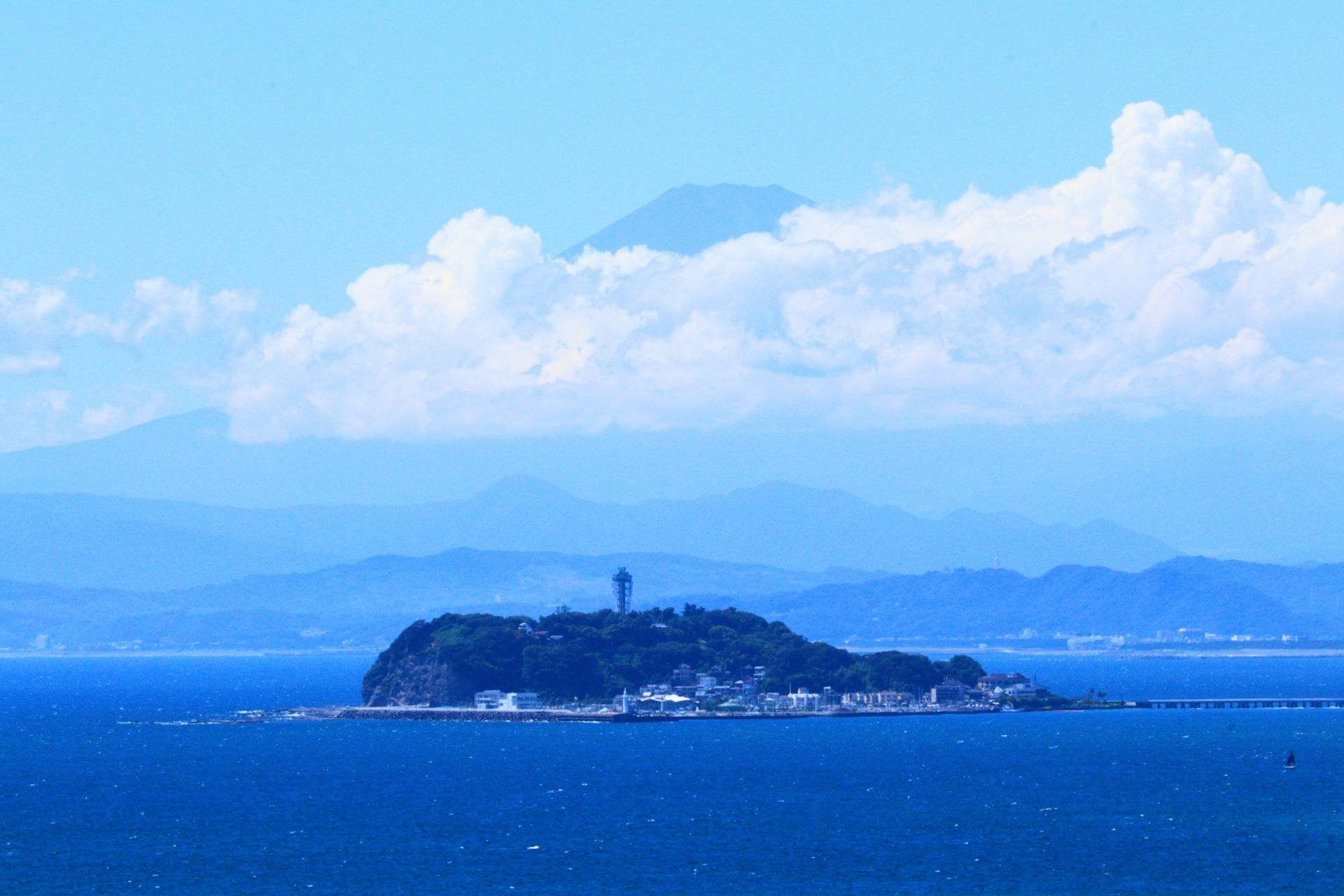
Brief History of Enoshima
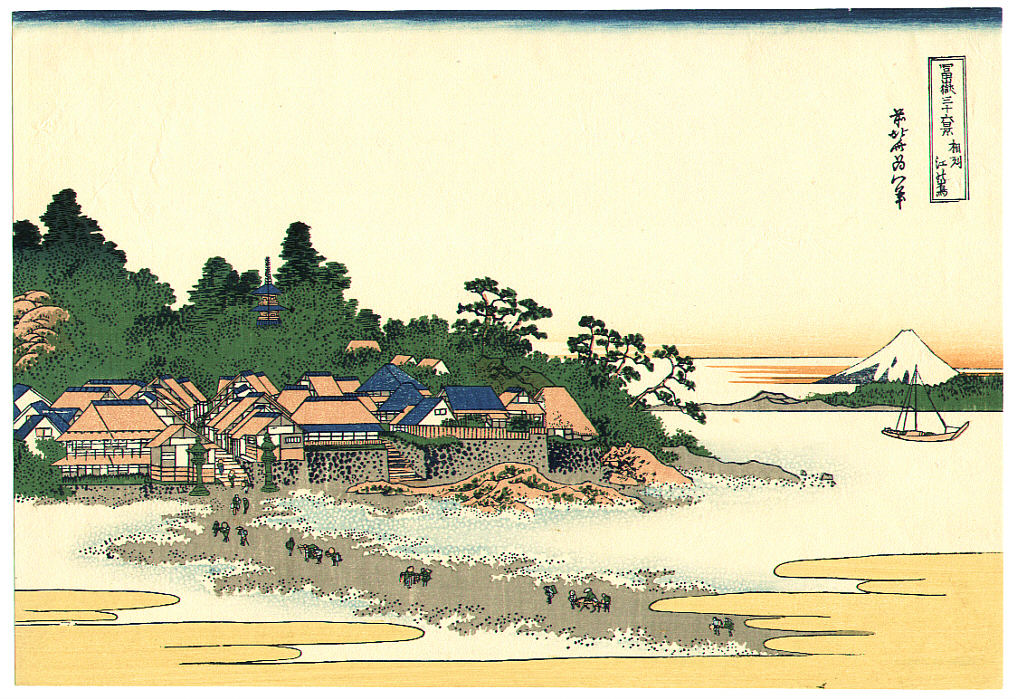
The history of Enoshima dates back to the Kamakura period (1185–1333). It has long been a sacred site, primarily dedicated to Benzaiten, the goddess of music, art, and wealth. According to legend, Enoshima rose from the sea in response to Benzaiten’s prayers, creating a haven for her to reside. The Enoshima Shrine complex, which consists of three main shrines (Hetsunomiya, Nakatsunomiya, and Okutsunomiya), was established to honor her.
During the Edo period (1603–1868), Enoshima became a popular pilgrimage destination. Pilgrims and tourists were drawn to the island’s spiritual sites and natural wonders, including the Iwaya Caves, which were considered sacred. In the 19th century, European traders discovered Enoshima, adding a touch of international influence to the island. The Samuel Cocking Garden, established by a British merchant, is a reminder from this era.
Today, Enoshima continues to captivate visitors with its beautiful shrines, breathtaking views, and a very distinct culture that’s in stark contrast to the city life. You’re far from the capital, and the Shonan culture is a breath of fresh air for Tokyo residents and an awesome discovery for short term international vistors. A warning to newcomers: you might fall in love immediately with this place!
What to Do in Enoshima
Enoshima is is a treasure trove of experiences, with a diverse array of activities and attractions that cater to all types of travelers:
1. Enjoy the Nicest Beaches 1h From Tokyo
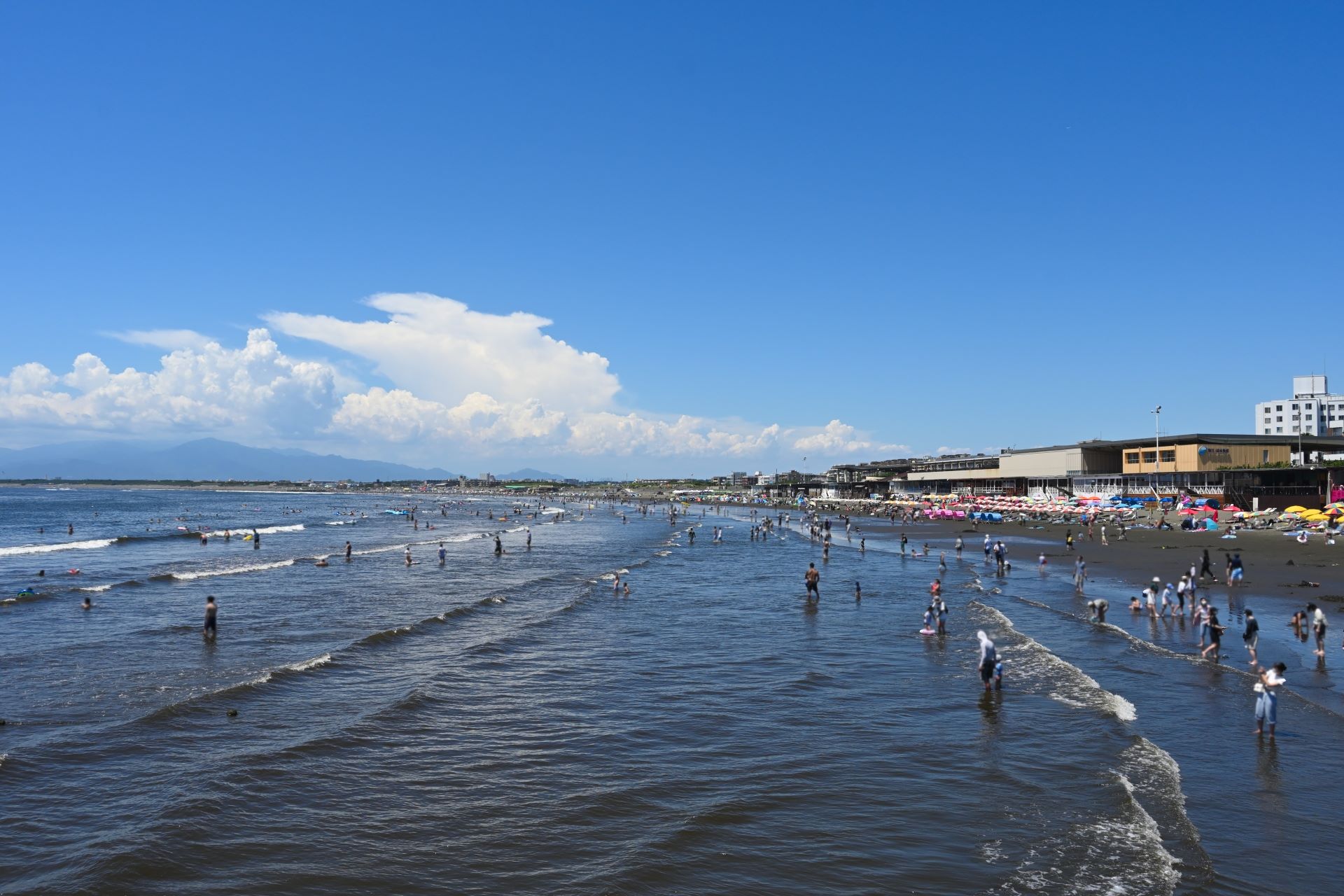
Katase Higashihama Beach (片瀬東浜海水浴場), located on the eastern side, is another popular destination. It does’t have as many stalls as Katase Nishihama so it might be a better option if you prefer a quieter spot. But during the summer months, both beaches are bustling with activity, including various beach festivals and events.
For those interested in water sports, Enoshima offers excellent conditions for surfing, windsurfing, and paddleboarding. The consistent waves and favorable wind conditions make it a hub for enthusiasts of these activities.
<<Book your beginner surfing lessons in Enoshima here!>>
2. Ride the Enoden
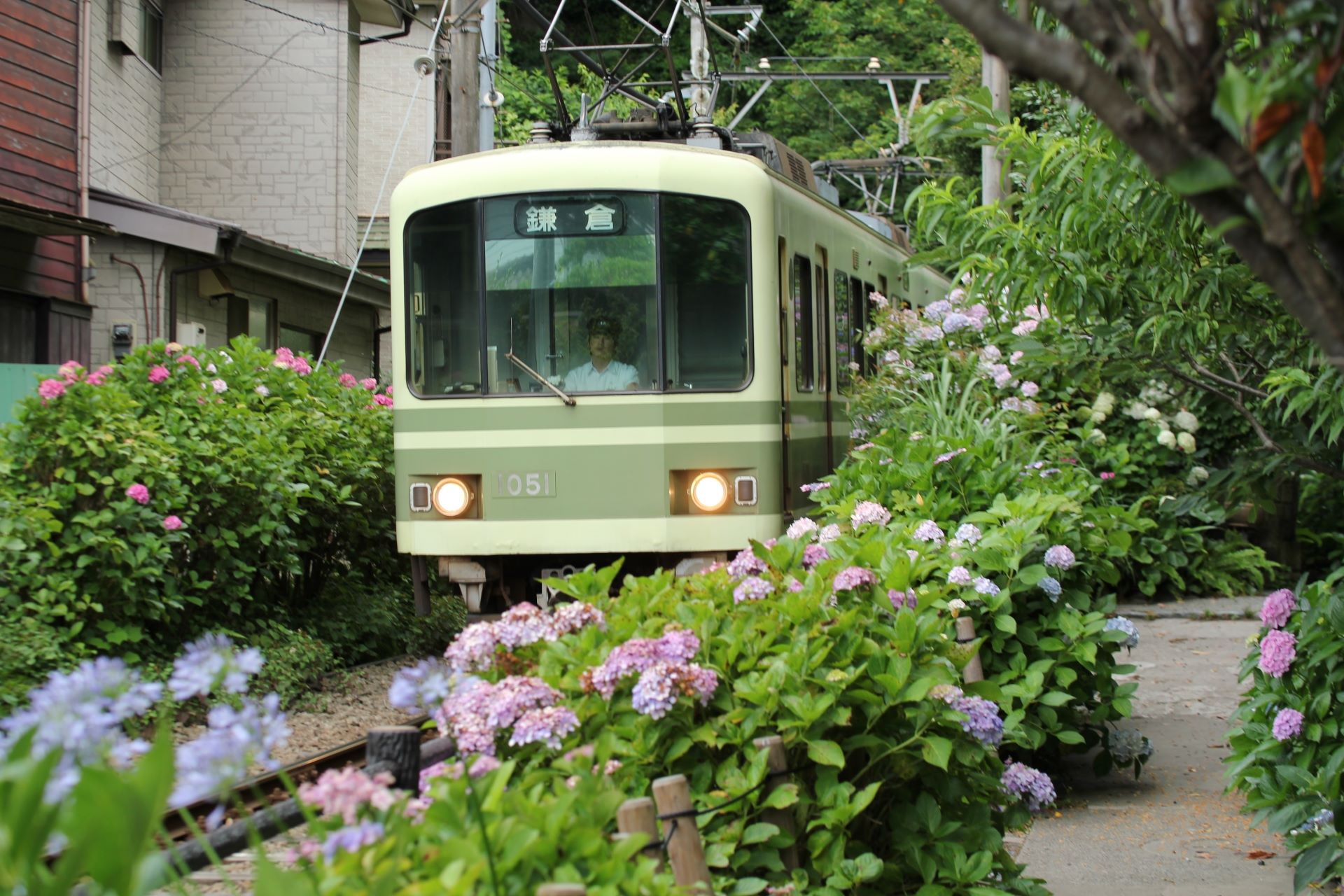
The Enoshima Electric Railway, affectionately known as the Enoden (江ノ電), is the most convenient way to move around the area with the added perk of a scenic journey along the Shonan coast. Established in 1902, this historic train line runs between Fujisawa and Kamakura, covering approximately 10 kilometers and 15 charming stations.
The Enoden experience begins at Fujisawa Station, winding its way through local neighborhoods, past lush greenery, and along the stunning coastline. As the train approaches Enoshima Station, passengers are treated to beautiful views of Sagami Bay. The route continues through scenic spots like Shichirigahama and Inamuragasaki, where the tracks run close to the shoreline, allowing for breathtaking ocean vistas. On clear days, Mount Fuji can be seen in the distance!
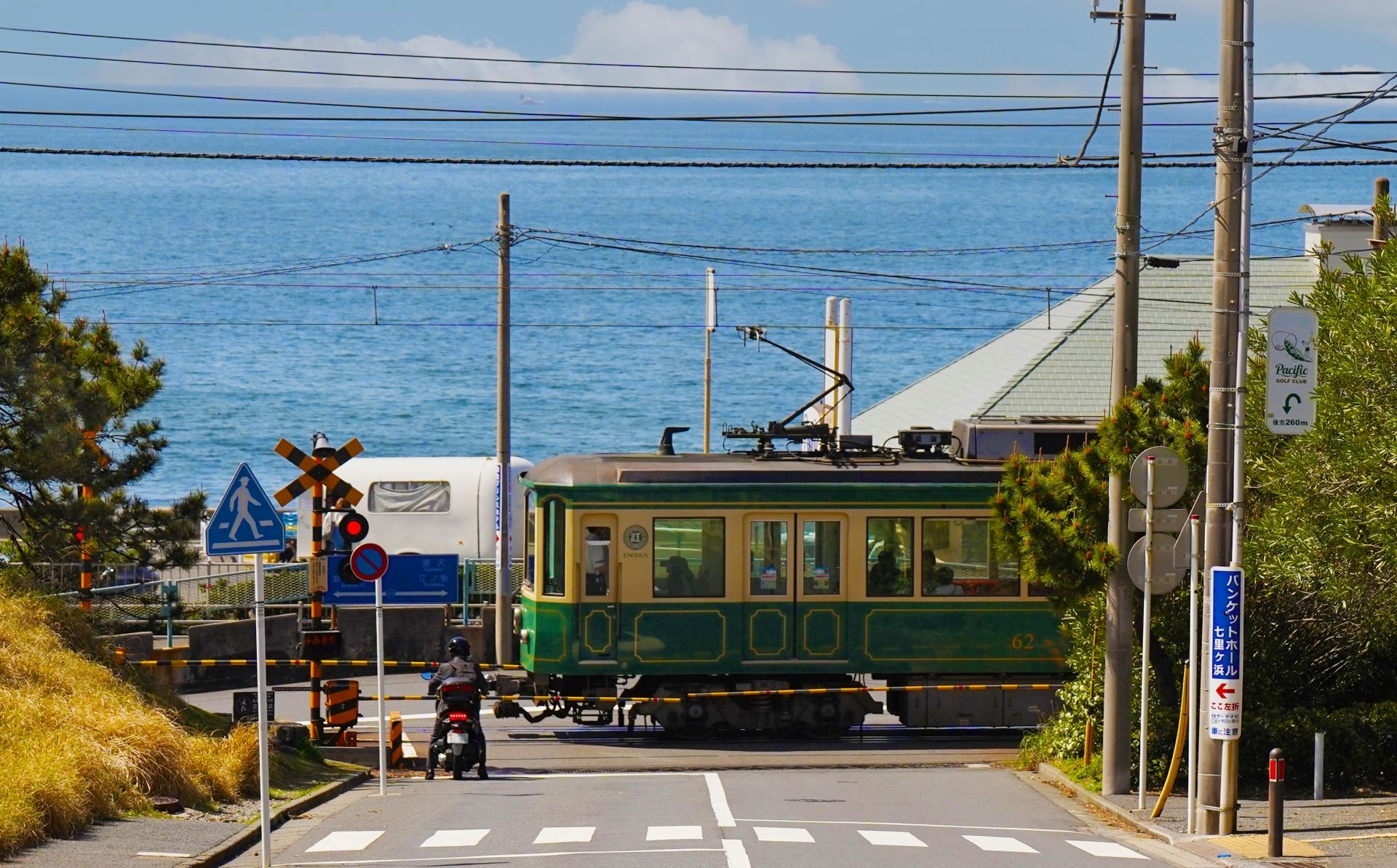
3. Visit Enoshima Shrine
Enoshima Shrine (江島神社) is a historic and sacred Shinto shrine dedicated to Benzaiten, the goddess of music, arts, and prosperity. Established during the Nara period (710–794), the shrine complex comprises three main shrines: Hetsunomiya (辺津宮), Nakatsunomiya (中津宮), and Okutsunomiya (奥津宮).
Hetsunomiya, the primary shrine, is located near the island’s entrance, past the Zuishinmon Gate and features a beautifully adorned main hall with intricate woodwork and carvings. Visitors often start their journey here, offering prayers and seeking blessings. A short climb leads to Nakatsunomiya, shrouded among lush greenery with a tranquil atmosphere and several other smaller shrines worth checking up. Further up and passing several cozy restaurants and cafes, Okutsunomiya is a lovely setting with a few resting spots and many more interesting places if you want to learn about local history.
The shrine is deeply rooted in local legends, including the story of Benzaiten’s divine intervention to create Enoshima Island. This is why pilgrims and tourists alike visit the shrine to pray for success in their artistic pursuits, business ventures, and personal relationships.
Pro Tip: Because of the island’s topography, you’ll have to climb lots of stairs. If climbing seems too much for you, there’s a convenient shortcut before Zuishinmon Gate where you can pay to access a set of escalators that go all the way to the top. It’s only available to go up and you will have to take the stairs to go down but it’s still a convenient option.
4. Stroll Around Samuel Cocking Garden and Go Up the Enoshima Sea Candle
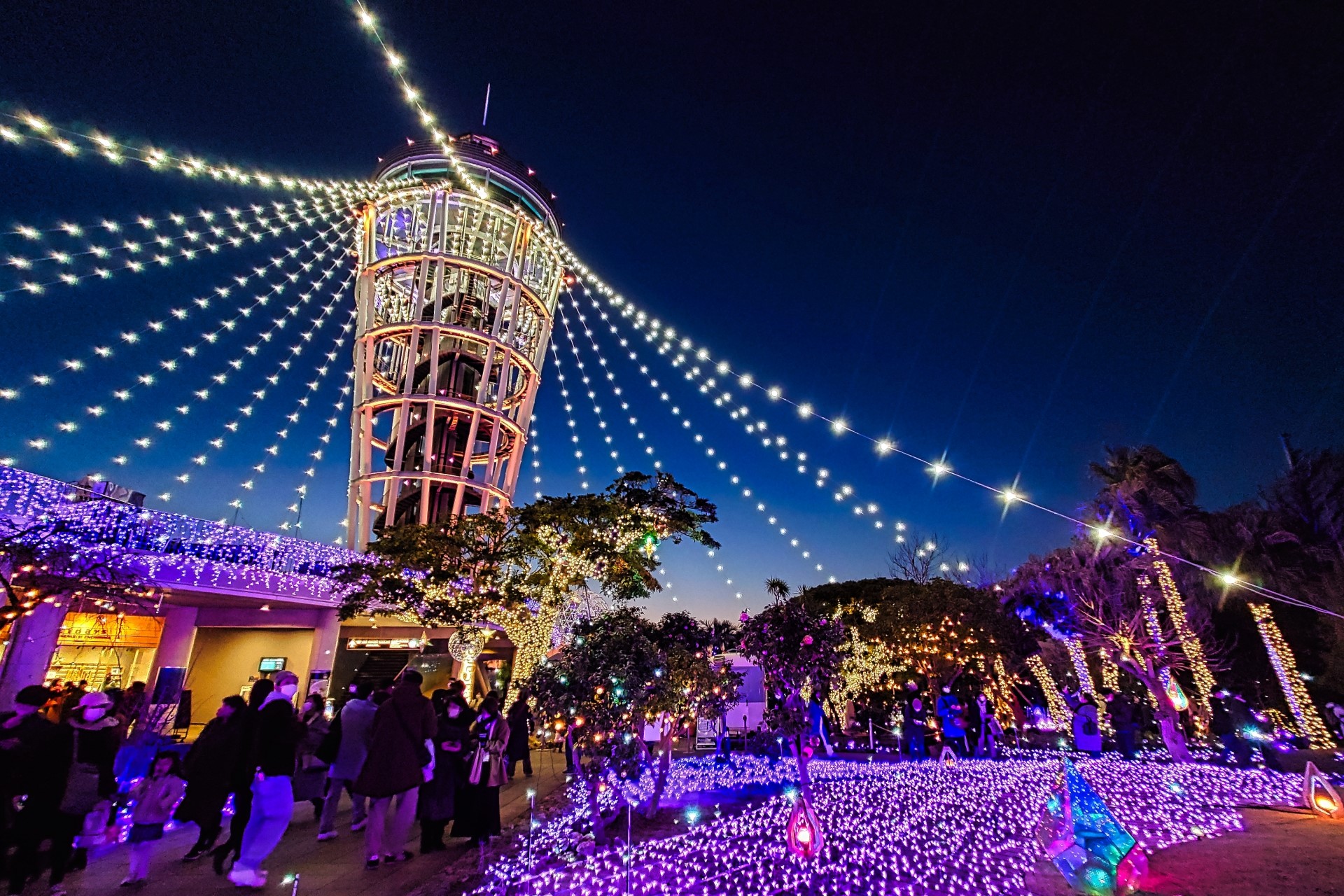
The Samuel Cocking Garden (江の島サムエル・コッキング苑), originally established by British merchant Samuel Cocking in the late 19th century, is a lush botanical haven with a wide variety of exotic plants and flowers. The original buildings were destroyed by the Great Kanto Earthquake of 1923 but the garden has been meticulously rebuilt and some of the ruins are preserved next to a small museum. Seasonal displays like the spectacular Winter Illumination and many more events throughout the year make this location worthy of returning to every once in a while.
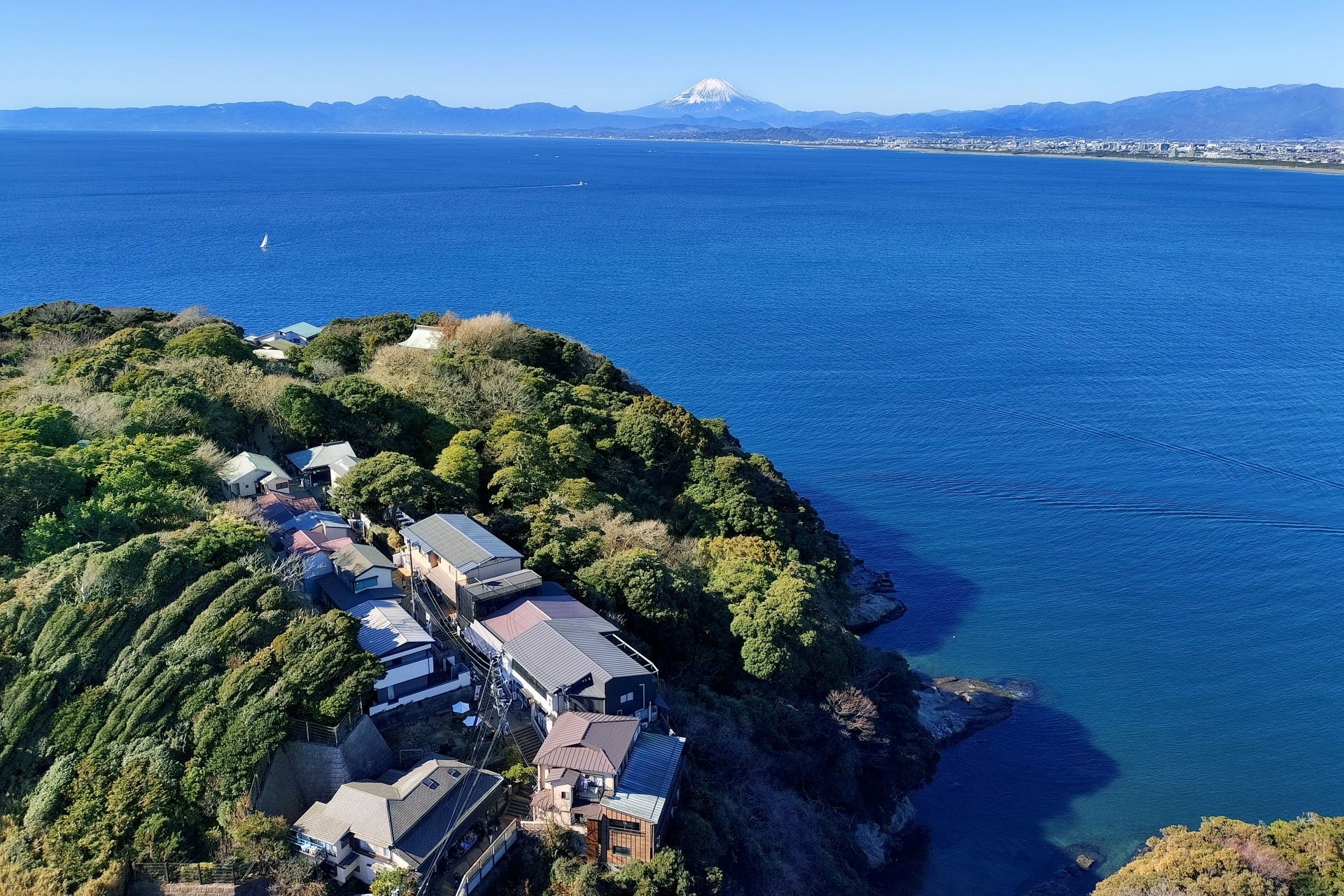
Rising above the garden is the Enoshima Sea Candle (江の島シーキャンドル), a modern lighthouse and observation tower with breathtaking 360-degree views of the island and its surroundings. Built in 2003, the Sea Candle stands at 59.8 meters tall and provides excellent vistas of Sagami Bay and, on clear days, the majestic Mount Fuji. The tower is accessible by elevator, and the observation deck is a popular spot for photography enthusiasts. At night, the Sea Candle is illuminated, creating a magical spectacle that adds to Enoshima’s charm.
5. Pray to the Dragon God and Ring the Dragon Love Bell

The Wadatsumi-no-miya, also known as the Dragon Shrine (龍宮), is a small but revered shrine located at the entrance of the path leading to the Dragon Love Bell (龍恋の鐘). Dedicated to the Dragon God, this shrine holds a special place in Enoshima’s mythos. According to legend, the Dragon God fell in love with a local maiden and vowed to protect the island. Visitors come to the Dragon Shrine to offer prayers and wishes, particularly those related to love, protection, fertility and good fortune.
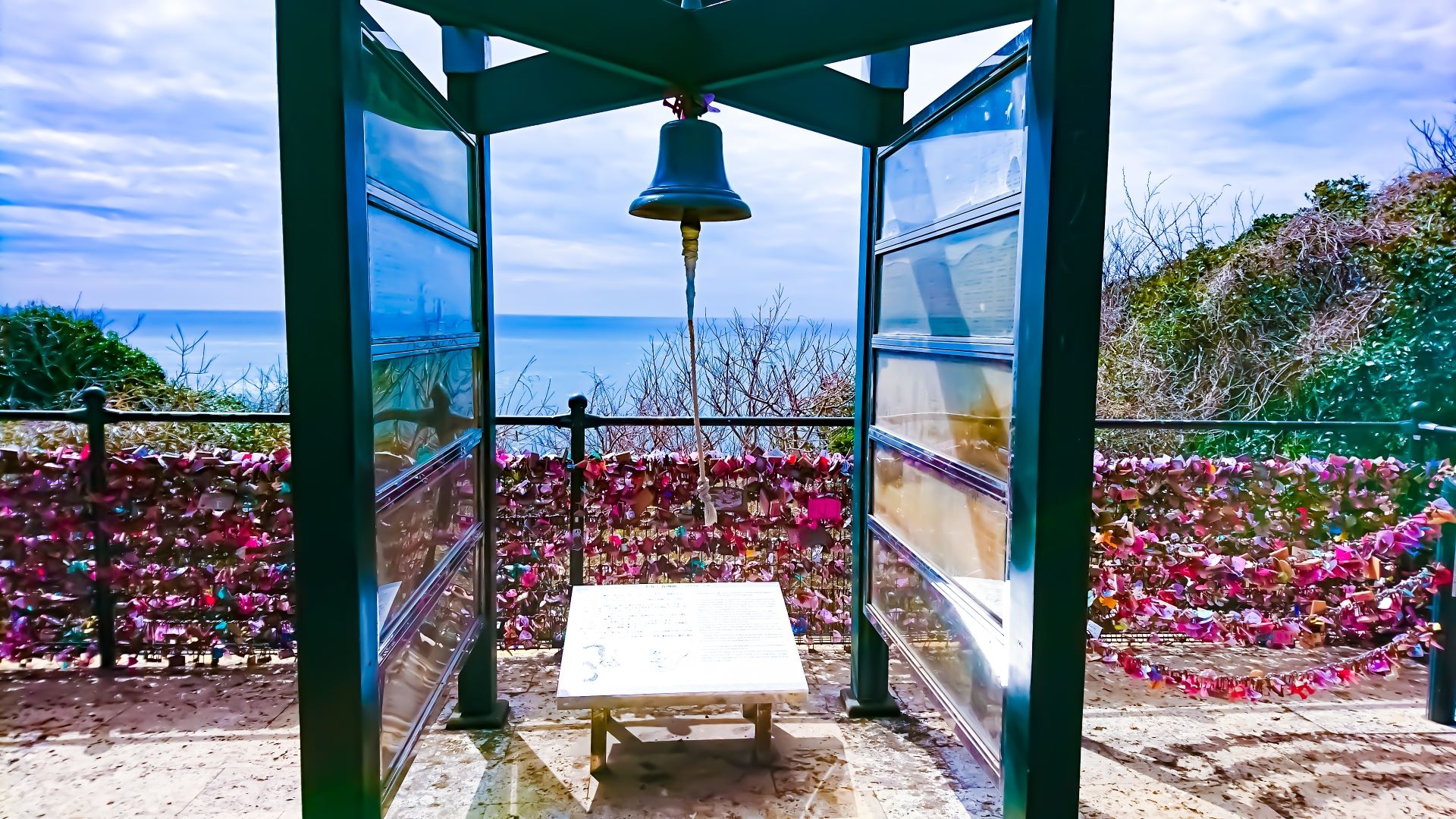
6. Venture Into Chigogafuchi Abyss and the Iwaya Caves
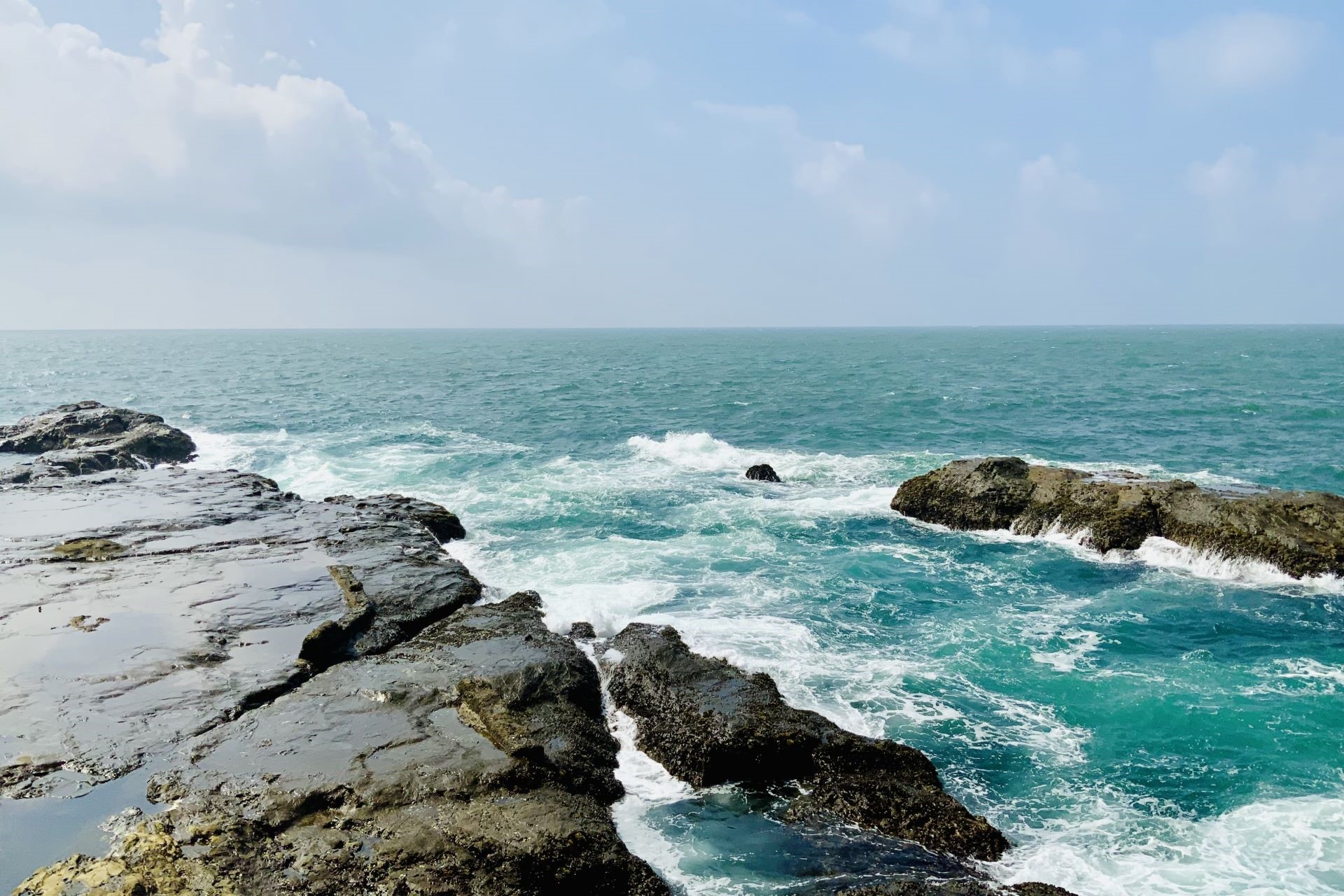
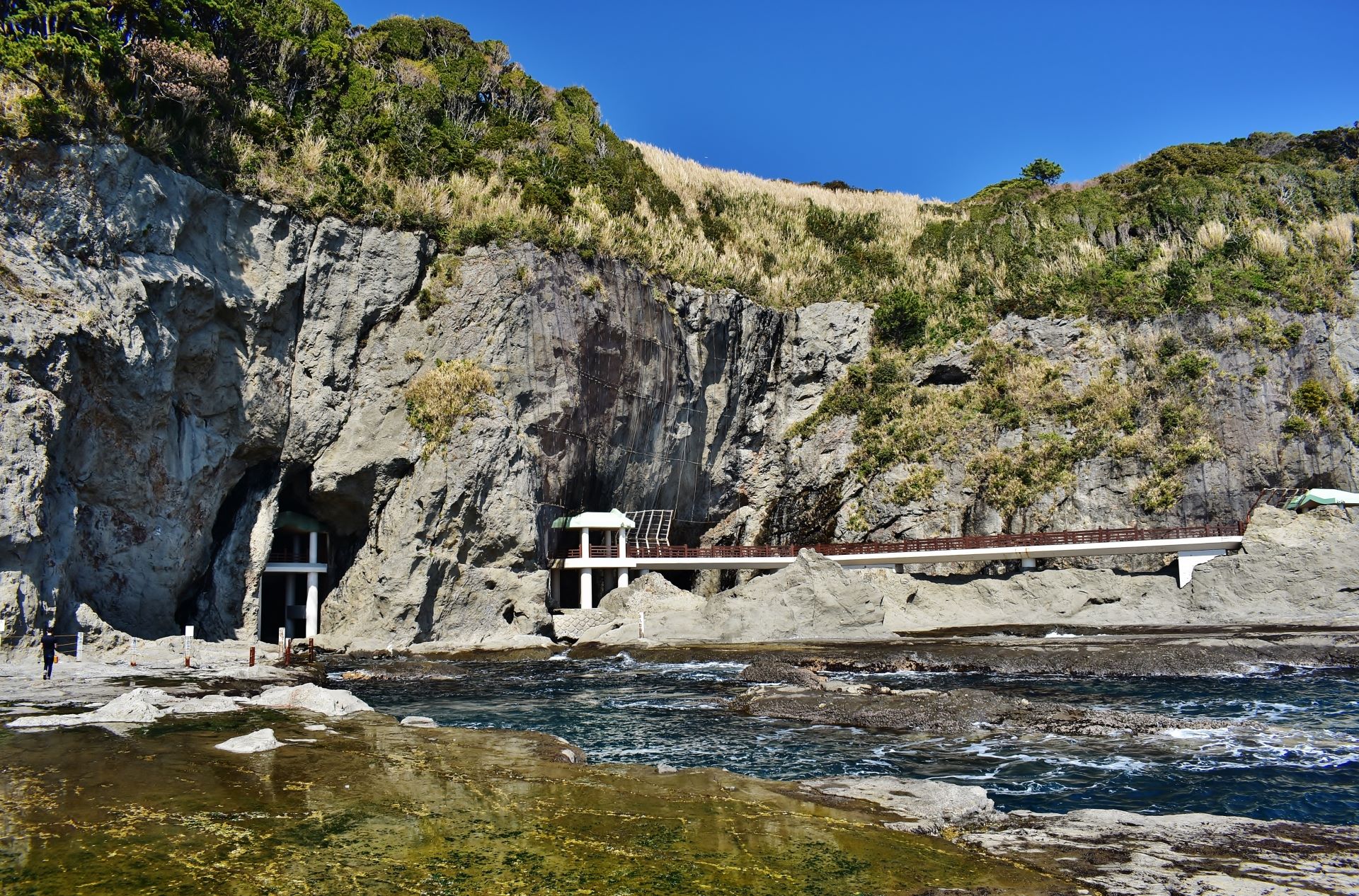
7. Eat Fresh Seafood to Your Heart’s Content
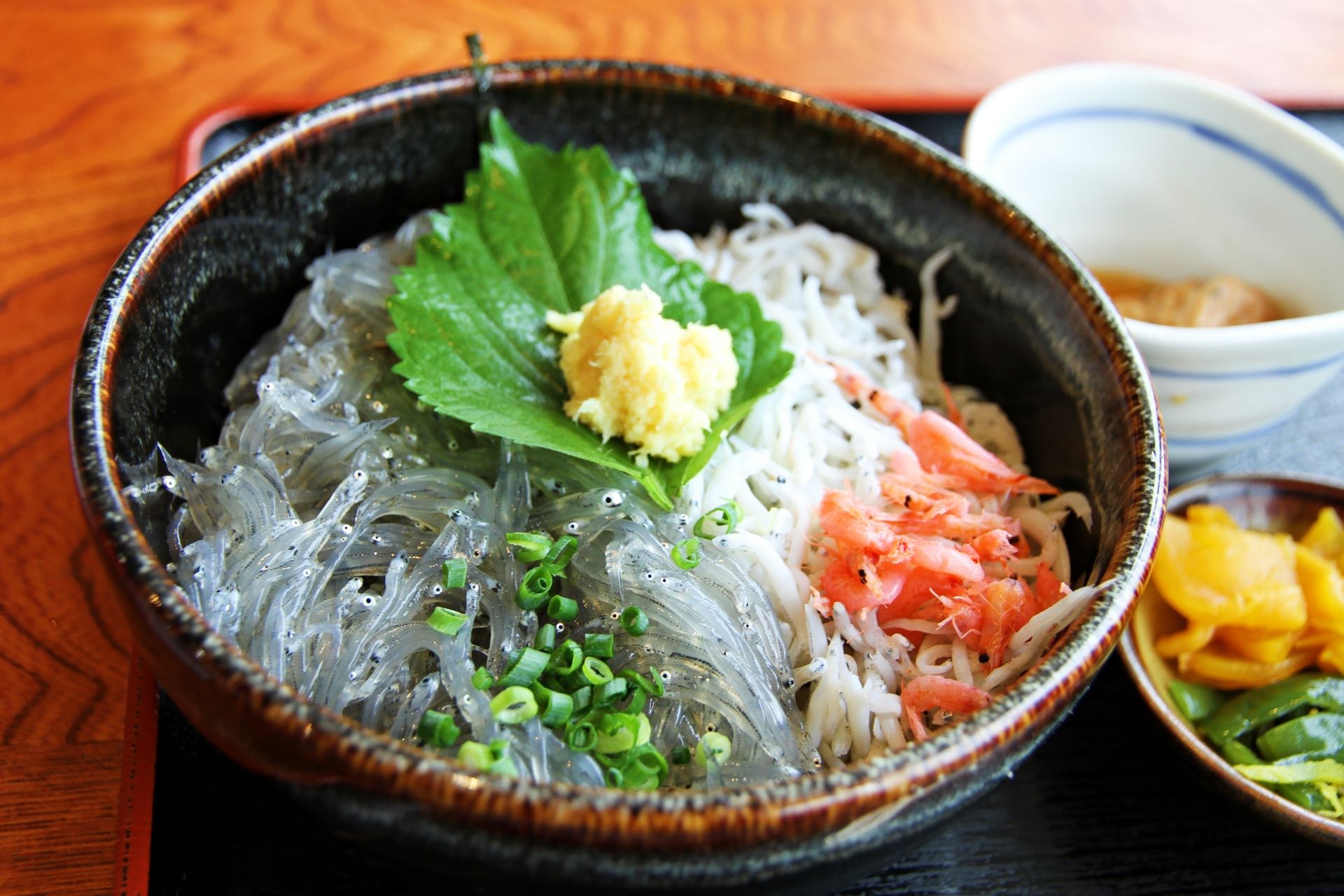
Shirasu is celebrated for its delicate texture and fresh taste. This tiny, translucent fish is typically enjoyed in several forms: raw (nama shirasu), boiled (kama-age shirasu), or dried (shirasu-boshi). One of the most popular dishes is shirasu don, a simple yet delicious rice bowl topped generously with shirasu. Other creative dishes include shirasu pizza and shirasu tempura.
Enoshima’s seafood dining scene is exciting and diverse, with numerous restaurants and food stalls lining the streets. There’s something for everyoe: casual eateries and upscale dining and everything in between where you can indulge in a wide variety of seafood dishes. Fresh sashimi, sushi, grilled fish, and seafood hot pots are just a few of the mouthwatering options available.
The local fishing port ensures a constant supply of the freshest catches, and the seafood offerings change with the seasons. In addition to shirasu, visitors can savor seasonal specialties such as squid, mackerel, and various shellfish, all prepared to highlight their natural flavors.
8. Rent a Bicycle And Enjoy the Coastline
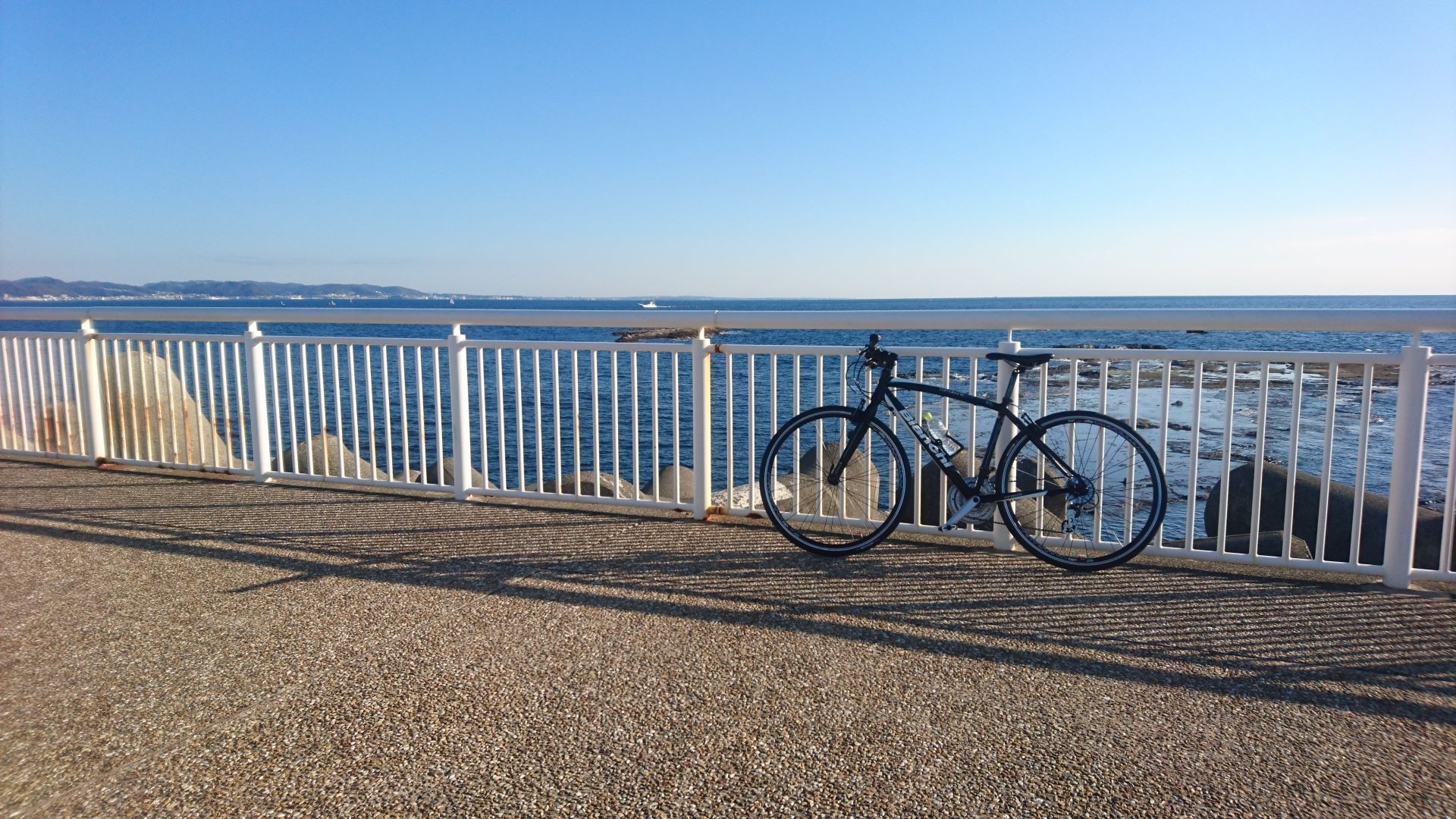
One of the most popular cycling routes is along Katase Nishihama Beach, where you can enjoy the ocean views and easy access to beachside cafes and shops. This is a relaxed route, with plenty of opportunities to stop and take in the scenery.
If you’re seeking a longer ride, the route from Enoshima to Kamakura is highly recommended. This scenic path takes cyclists through charming coastal towns and past historic landmarks. Along the way, you’ll encounter picturesque views of the ocean, lush greenery, and traditional Japanese architecture.
To ensure a safe and enjoyable ride, it’s important to wear a helmet, follow local traffic rules, and stay hydrated. Some routers have designated bike lanes, but cyclists should remain mindful of pedestrians and other vehicles.
How to Get to Enoshima
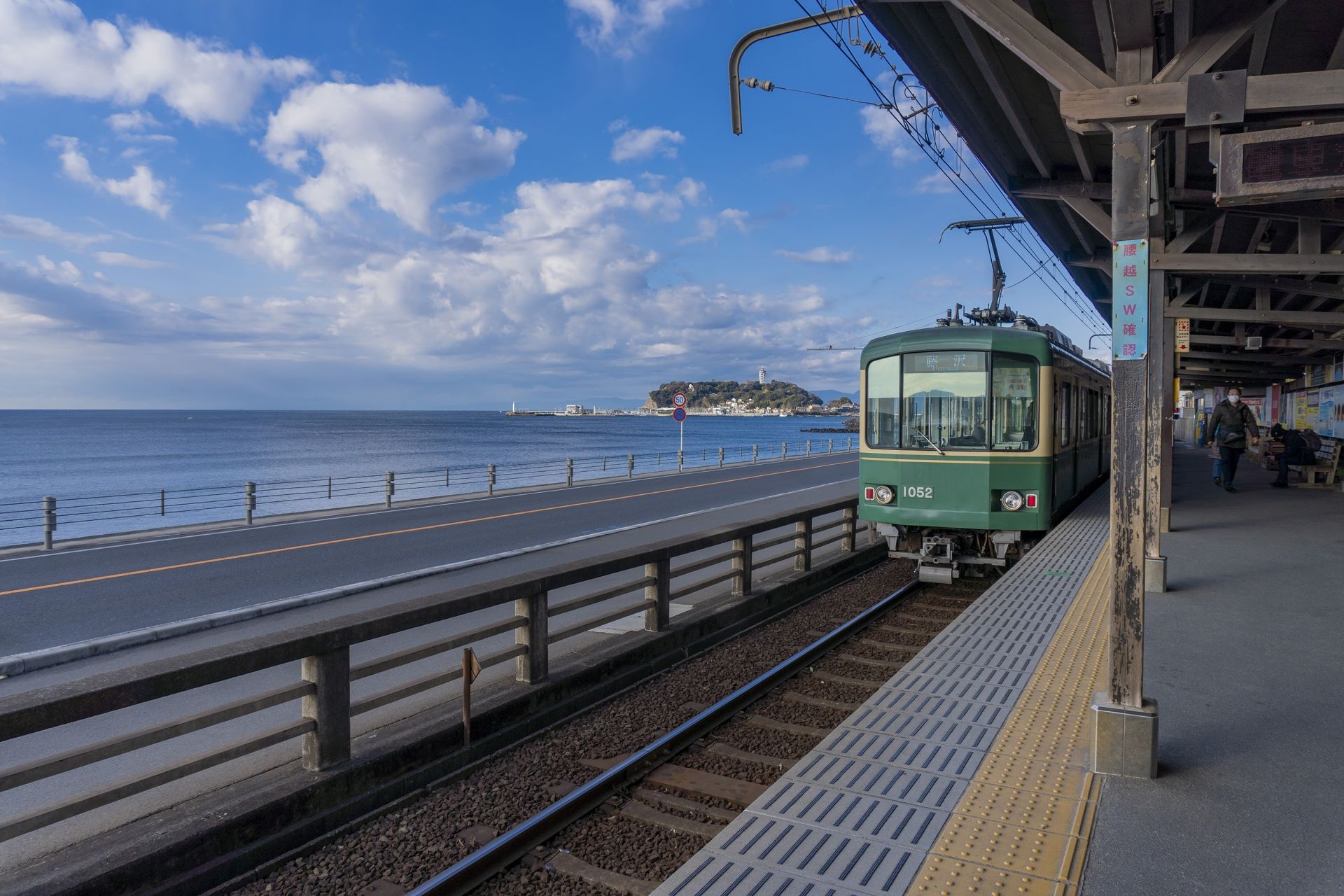
Alternatively, you can take the JR Tokaido Line from Tokyo Station to Fujisawa Station, which also takes about 50 minutes. From Fujisawa, transfer to the Enoden Line for the short trip to Enoshima.
Tourist Attractions near Enoshima
The Shonan area is one of the nicest areas near Tokyo for a nice day trip or (at least) a weekend getaway. Don’t miss these nearby spots too!
1. Enoshima Aquarium
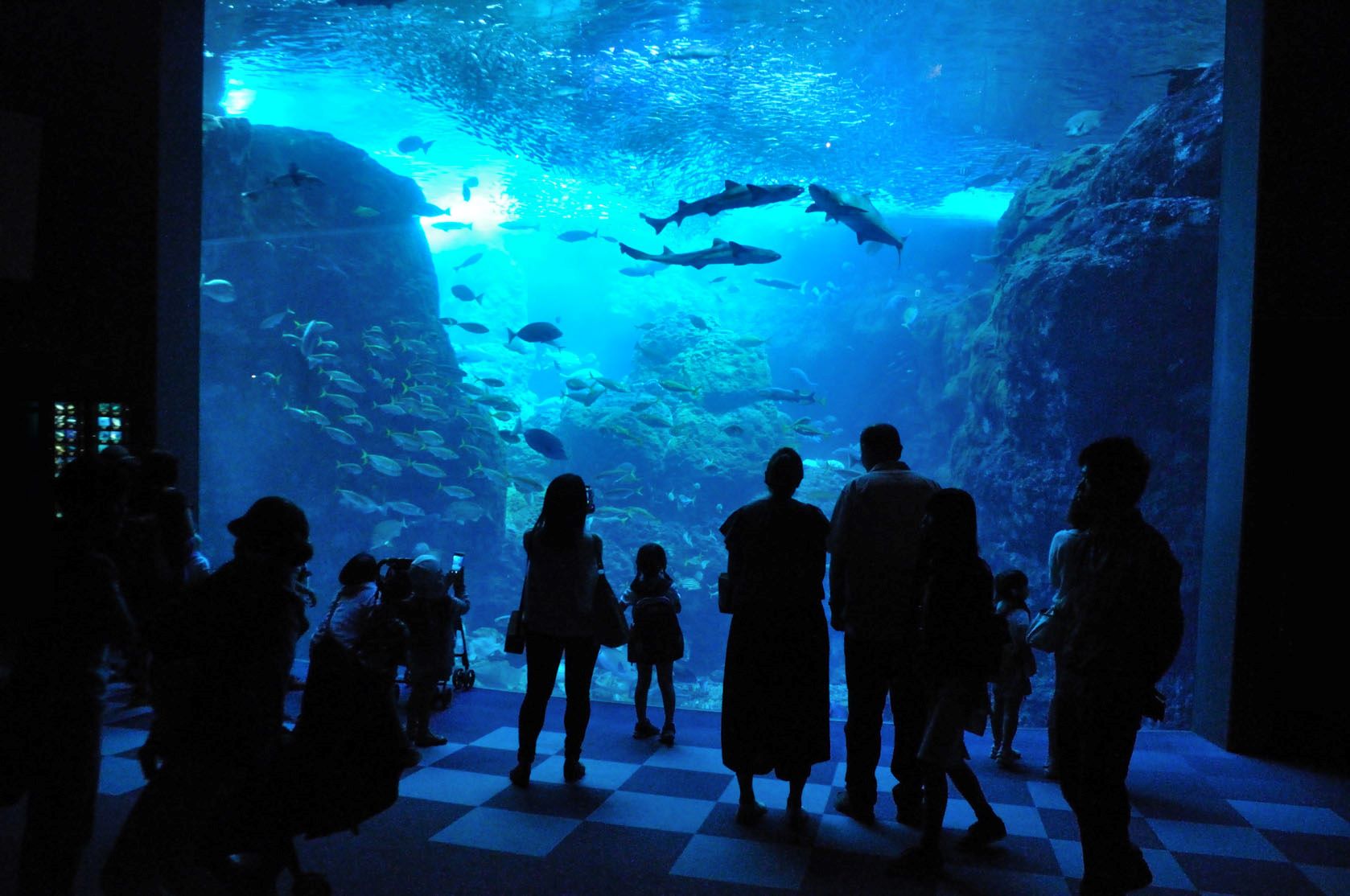
<<Book your Enoshima Aquarium tickets here!>>
2. Ryukoji
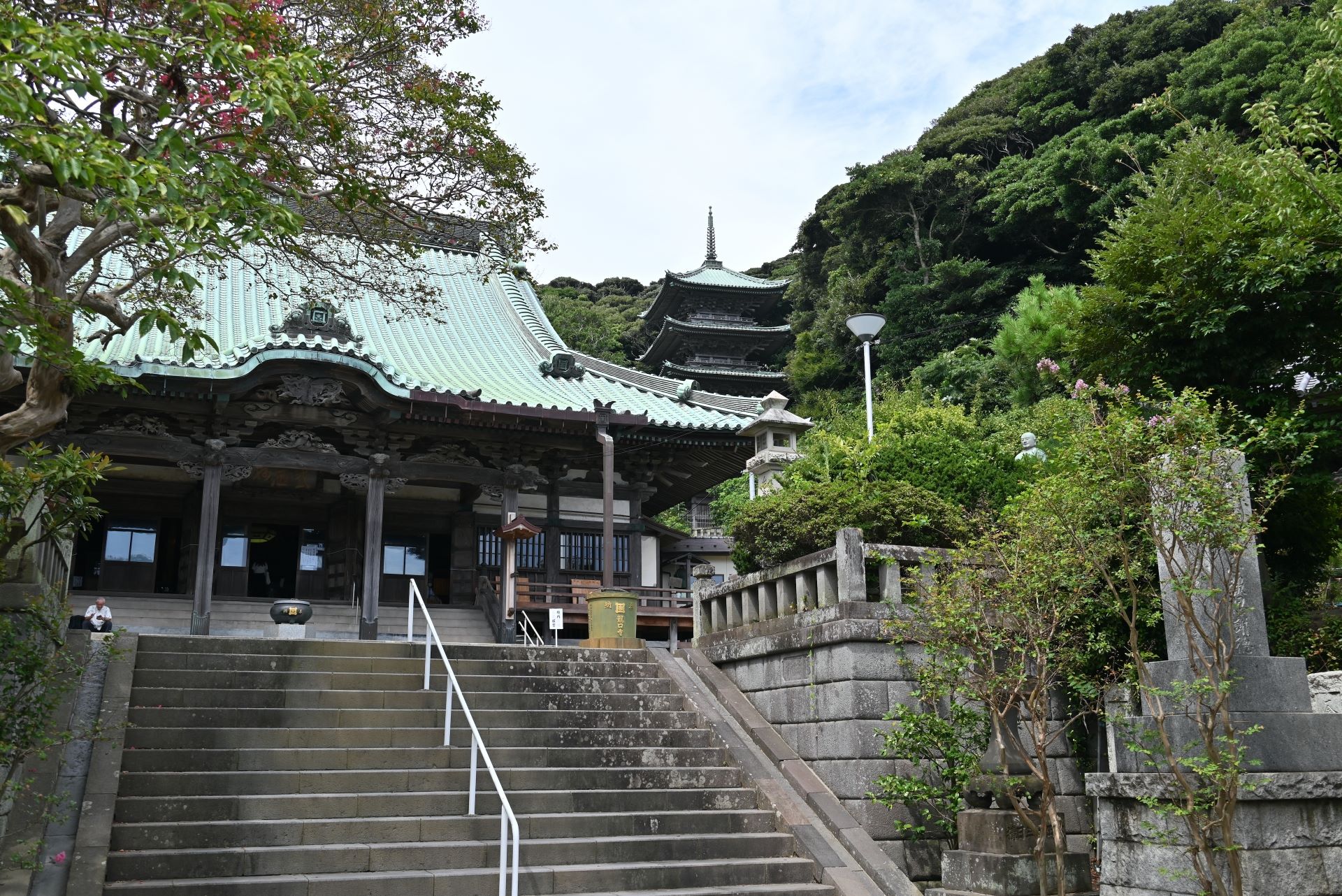
3. Ofuna Kannonji
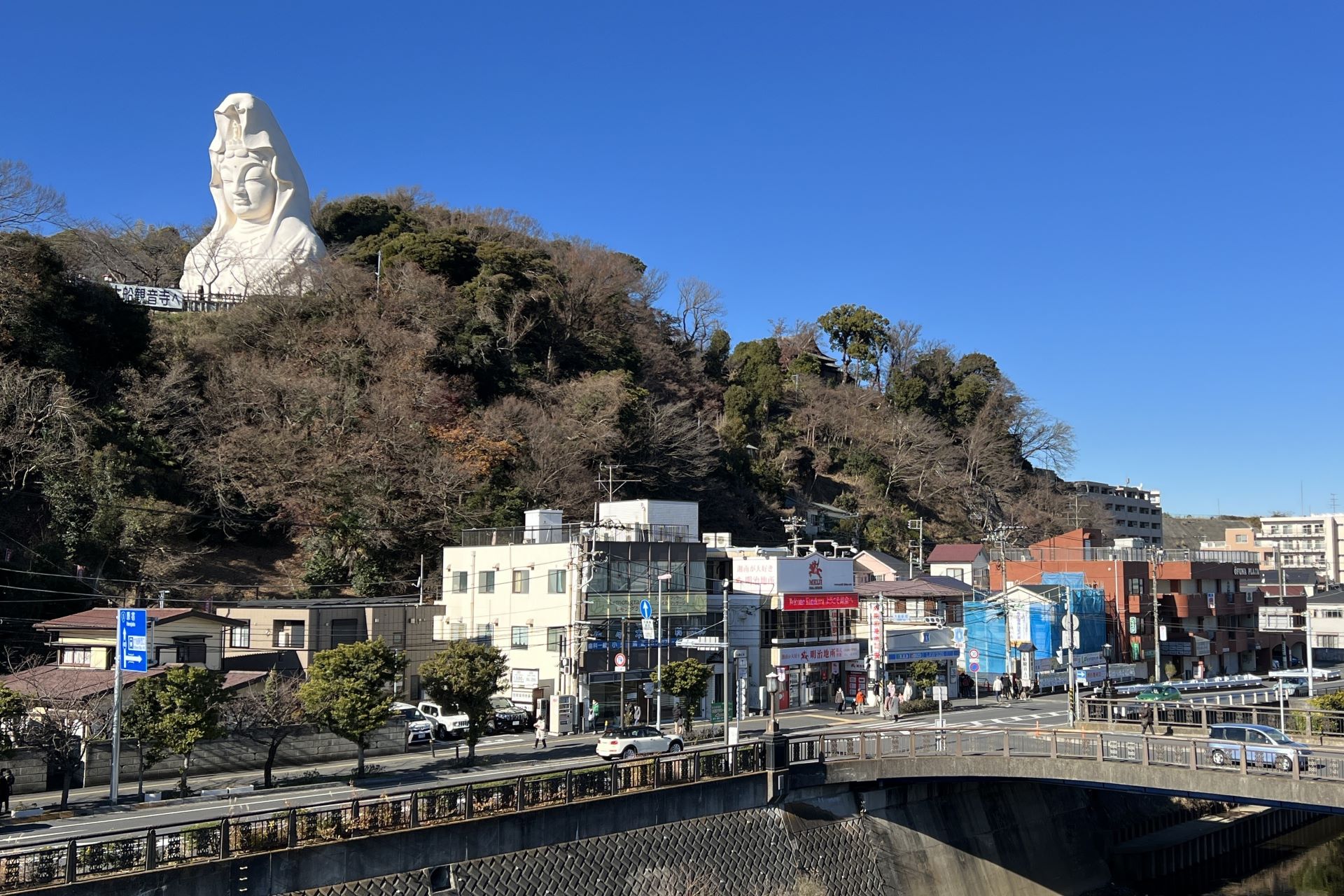
 Access Access |
15-min walk and 15min monorail from Enoshima Island |
|---|---|
 Official Website Official Website |
http://www.oofuna-kannon.or.jp/index.html |
4. Kamakura
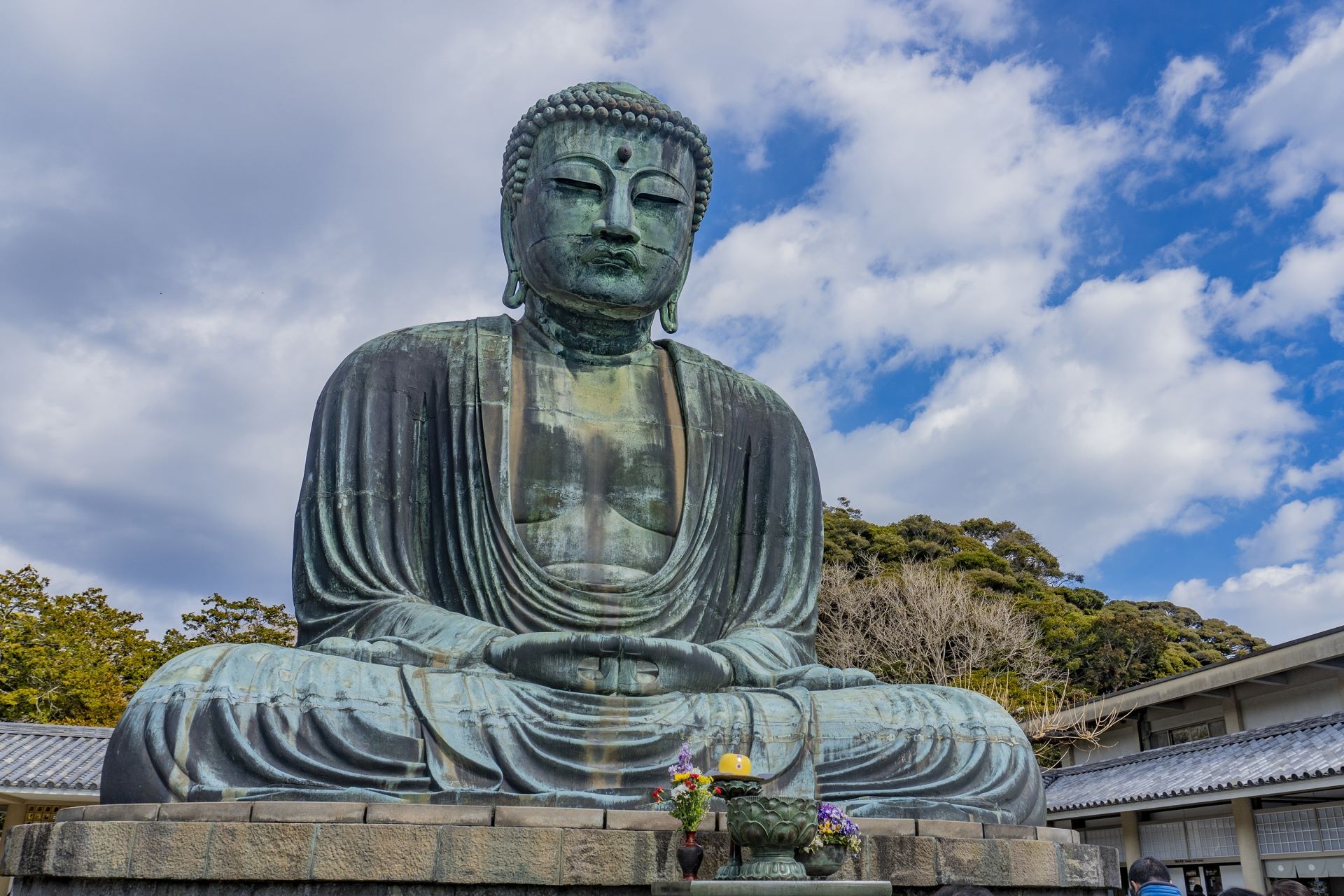
For more information about traveling in Japan, check these articles below, too!
Written by
Photographer, journalist, and avid urban cyclist, making sense of Japan since 2017. I was born in Caracas and lived for 14 years in Barcelona before moving to Tokyo. Currently working towards my goal of visiting every prefecture in Japan, I hope to share with readers the everlasting joy of discovery and the neverending urge to keep exploring.





